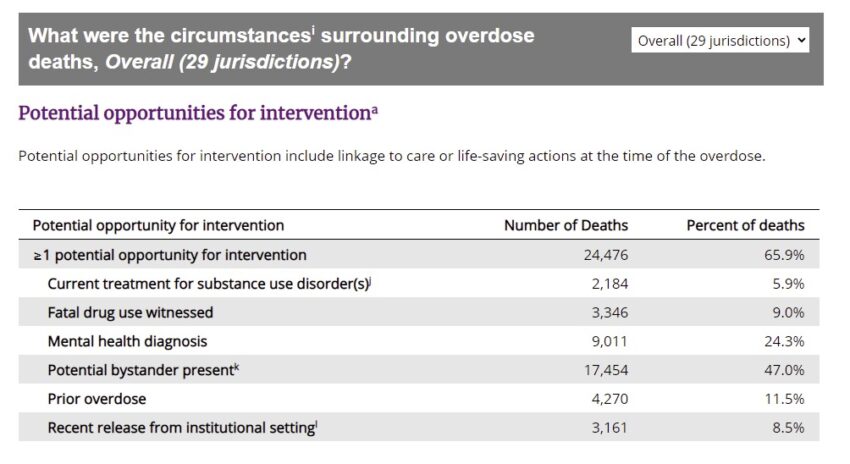The CDC recently released data from their 2020 State Unintentional Drug Overdose Reporting System (SUDORS), which describes the drugs involved in and circumstances surrounding drug overdose deaths in 28 states and the District of Columbia.
It is available for download here:
https://www.cdc.gov/drugoverdose/databriefs/pdf/SUDORS_Data-Brief_Number_1.pdf
Four points from the report are crucial to understanding the death epidemic.
1. 91% of those who died used alone.
2. 47% had a potential bystander present.*
3. Only 11.5% had a prior overdose.
4. 70% of deaths involved fentanyl.
What does this tell us? People die because they use alone. They use alone because stigma and law drive them into the shadows away from those who could help them if they overdose. Deaths are accidents, caused not by excess use, but by an unsafe drug supply (Fentanyl). When users are unable to predictably judge their dose, death may result if they use alone and they get a bad mix..
To end the death epidemic, we need to treat drug use as a public health issue, not a criminal one. End stigma, decriminalize drugs. Replace our illicit unsafe drug supply with a safe, regulated supply.
The War on Drugs is all most of us have ever known. It has been a spectacular failure. Let’s get started on building a new world that treats its citizens with dignity and not as the enemy.
* A potential bystander is defined as a person aged ≥11 years who was physically nearby either during or shortly preceding a drug overdose and potentially had an opportunity to intervene or respond to the overdose. This includes any persons in the same structure (e.g., same room or same building, but different room) as the decedent during that time. For example, the family member of an opioid overdose decedent who was in another room during the fatal incident would be considered a potential bystander if that person might have had an opportunity to provide life-saving measures such as naloxone administration, if adequate resources were available and the family member was aware that an overdose event could occur. This does not include, however, persons in different self-contained parts of larger buildings (e.g., a person in a different apartment in the same apartment building would not be considered a potential bystander).

